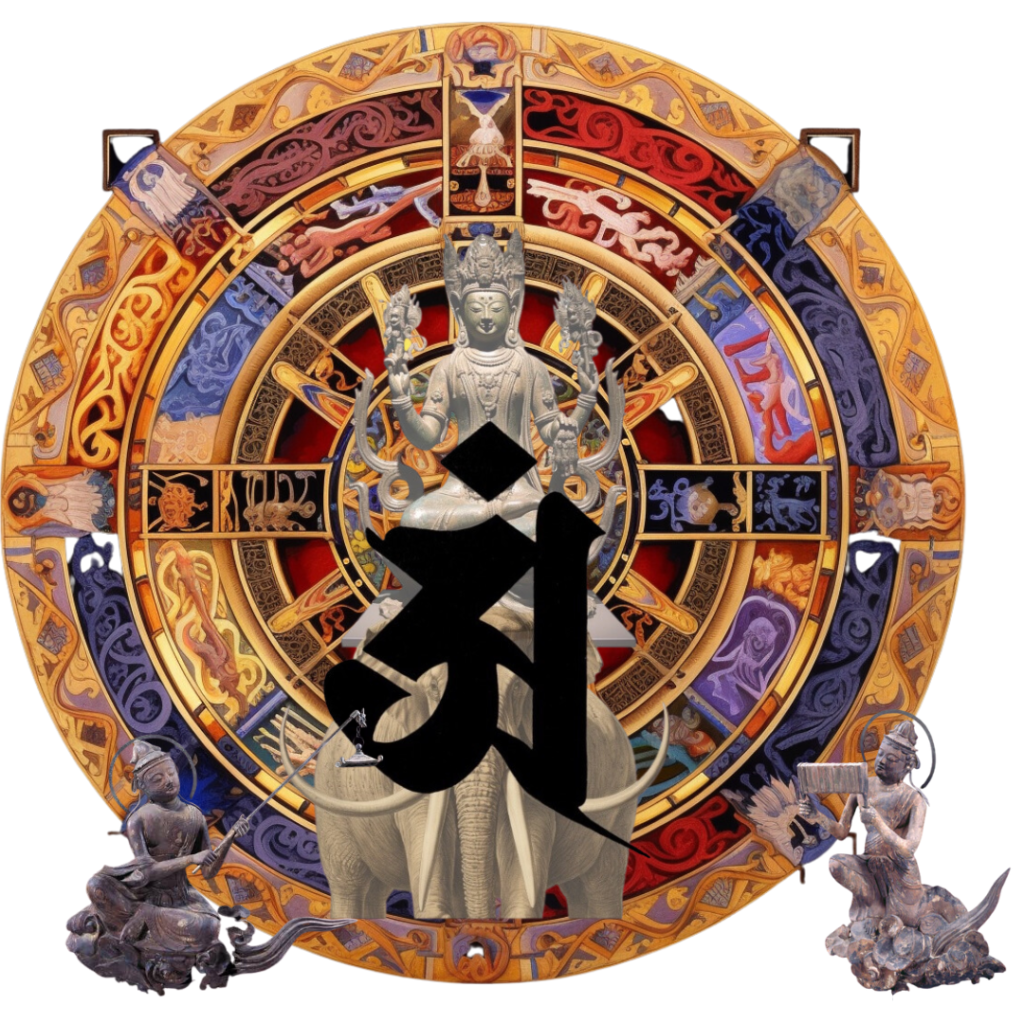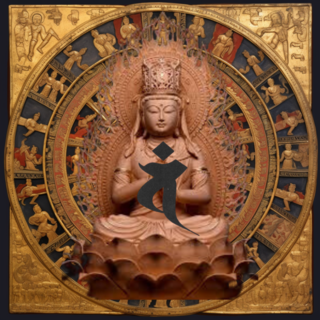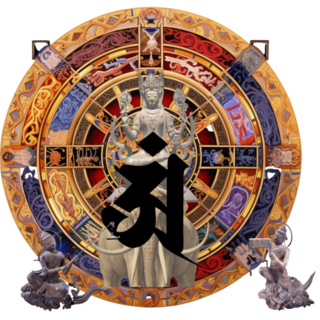物理学の天才博士よ、 おなじく丁博士、また、すばらしい感覚の十二行詩を書く詩人A君、 おなじくつぎのノーベル賞作品を書くであろうといわれているH氏よ、さてまた華麗なるコンチ フェルトを得意とする作曲家のG君、企業の天才Z氏、その他すべてのエリート諸君、私は諸君に 警告する。諸君は、知識欲旺盛な若ものたちに頭から食べられてしまわぬよう、至急ガードマン の手配をせよ!
諸君は、現実に近い未来において、モリモリと頭から喰われてしまう恐れが多分にあるので す!
実際に、この私だって、いつなんどき、あなた方のなかのある人をふと食べてしまおうかと思 い立たぬともかぎらないのだ!
おそろしい世のなかになったものである。だれかの脳髄を食べてしまうことによってその人の 頭のなかにある記憶をそっくりこちらにいただいてしまうことができる可能性が発見されつつあ る。人なみすぐれた脳を持つ者は、いつなんどき誘拐されて、その脳を抜きとられてしまうか知 れぬ恐怖に、うかうか町も歩けぬことになる。アイデアにゆきづまったり、試験に落ちてばかり いることから抜け出すために人の脳をねらう殺人者で地球はおおわれてしまうかも知れない。 まくやって世界的なを手に入れしかしまた。 そんな血なまぐさい事件は警察にしっかりたのんでおいて、たのしいレジャーに 応用することもできる。 百獣の王ライオンになってジャングルをさまよい歩いたり、巨大な畑へ どになって、熱帯の樹の上で居ねむりする感覚や記憶をたのしむこともできる。
さて、本題にもどろう。
いや、これは決して空想小説ではない。脳の記憶の構造をしらべているうちに、じっさい 科学者たちはそれが実現する可能性につきあたってびっくりしたのである。
われわれの日々の体験、いいかえれば情報"だが、これは脳の一部に痕跡として残り、痕跡 は反復によって強められる。これを「記銘」といい、記銘されたものは必要に応じて再現も、想 起することもできる。 この生体の仕組みを「記憶」といい、反復によって記銘を強めることを 「学習」するという。 以上が、記憶というものの一連の作業のすがたである。 では、記銘はどの ようにしてなされるか?
大脳皮質頁の図の太線で示された「新しい皮質」と、斜線で示された「古い皮質」の、厚 ミリメートルの表面には、約一四〇億の神経細胞(ニューロン)がぎっしりとならんでい る。 次頁の上図はひとつのニューロンであるが、これらは、 模式的に書くと下図のように、おた がいがからみ合っている。 その仕組みは、最初のニューロンの樹枝状突起(デンドライト)に、受
容器または他のニューロンにつながる神経線維からひとつの情報パルスが入ると(頁参照)、それによって細胞体の電位がわずかに変化する。 細胞にはたくさんのデンドライトがあり、ひと つのデンドライトにはたくさんの神経線維がつながっているので(このつながりのところがシナブスである) (頁参照)、この細胞体にあたえられるパルス電圧はプラスであることもマイナス であることもあるけれども、とにかく合計してある電圧にまで高まると、はじめてこの細胞体は 輪に一発のパルスを送り出し、これが、つぎのニューロンのデンドライトにつたえられる。こ のようにして情報はつぎつぎと のに亡くなった偉大な神経生理学者、シェリントンにとって、脳はとてつもない配電盤であった。 彼と彼の後継者たちは、脳を電気的な面からだけ理解しようと努力した。記憶の保持は、モール 信号のように情報をつたえるパルスの行列が、複雑な神経細胞の連鎖がつくる回路のなかを無 に廻っている状態だと考えられた。そうして、想起とはそれが必要に応じてとり出されること だと考えた。しかし、現在は、きまったパターンの回路を、パルスがいつでもすぐに廻りうるよ うになっている状態だと考えられている。
そのためには、回路を組立てている神経細胞連鎖のシナプスが、ほかのシナプスよりも、パル スをより伝達しやすいようになっていなければならない。 つまり、シナプス抵抗の減少である。 この仕組みについて、いくつかの考えが出されている。
まず第一は、あるシナプスをパルスがたびたび通ると、そこに構造的な変化がおこるだろうと いうのである。ちょうど、筋肉をきたえると、筋肉細胞が肥大するように、シナプスを形成して いる神経線維の末端の終末ボタンが大きくなったり、数がふえたりして、その結果、シナプス抵 抗が減少するというのである。この考えを支持する事実として、近年、ヘップ (D.O. Hebb) た ちが、刺激によってニューロン終末ボタンの数がふえたり、大きくなったりする現象を報告して いる。
第二は、シナプス伝達の実体であるアセチルコリンのような伝達物質が、よりたくさん分泌さ
れるようになるのだろうという考えである。 最近、シナプスに、電気刺激によってパルスをたく さん送りこむと、シナプス前部膜にある伝達物質をふくんだシナプス小胞が、膜の表面に移動し てくることが観察されている。 また、その逆に、ウサギの網膜で、双極細胞と錐状体、杆状体(光
容器との間のシナプスにあるシナプス小胞が、数日間完全な暗闇におくことによって減少 するという。脳のはなし・時実利彦著) つまり、 シナプスをたびたびパルスが通ると、より多くの 伝達物質が分泌されるようになるから、シナプス伝達の抵抗は減少することになるわけである。 こうして全く電気器機だと考えられていた脳は、次第に化学の面から見直されるようになって
ことに、分子生物学の進歩によって、遺伝情報が分子の長い鎖状高分子にきざみこまれている ことが明らかにされた結果、記憶もまた分子のなかにたくわえられているのではないかという考 え方が出てきて、それがひろくとり上げられるようになった。
RNA (リボ核酸、リポースを含む核酸で、タンパク質と結合して細胞質中のリポゾームの重 要成分をなし、タンパク質の合成に関係がある) がその問題の分子であるという考えを、スウェ ーデンのホルガー・ヒデン教授が発表した。
教授は、いろいろな行動を学習したネズミの脳をとって分析したところ、学習したネズミはし ないネズミにくらべて、神経細胞中のRNA量が増加し、核RNAのアデニンとウラシルとの比 増加していることを発見した。
る。さらに別の実験では、迷路を刺激された神経細胞はRNAおよびタンパクが増加し チトクローム酸化酵素の活性も増加するが、神経細胞に接して存在するニューログリア細胞では 反対の傾向がみとめられた。 それゆえ、もしこの変化が記憶痕跡をつくるのに関係するものであ れば、神経細胞とニューログリヤ細胞は一体となって、記憶をつくるのに参加していることにな
冷却、ショック、薬品、その他多くの手段をつかって、脳の電気的活動を一時的に停止させた のちも、記憶がさまたげられないで残っているということが実験でたしかめられた。このことは 記憶の究極の本質が、電気的なものではなくて、化学的なものであるという考えをつよく支持す 基礎になっている。けれども、電話のダイヤルをまわすときに電話番号をちょっとおぼえるの に使うような短い記憶は、本来、電気的なものであろうと考えられている。この種の記憶は、た いてい、すぐ消えてしまう。(ただし無くなってしまったのではない)もしそうでなかったら、 われわれは、どうでもいいようなこまごました記憶の大群のなかで、にっちもさっちもゆかなく なり、必要な情報など見つけ出すことができなくなってしまう。
動物について行なわれている多くの実験は、"記憶" が長期的な記憶にプリントされるに は数時間かかることを示している。 学習がおこなわれても、脳の神経細胞ですぐに長期的な記憶 がつくられるのではない。記憶ができるためには一定の時間が必要であって、もしこの間に脳の
神経細胞に混乱を生じるような活動をおこすと、記憶は固定されないで消えてしまう。 記憶の固 定時間が必要であるということは、記憶痕跡をつくるのに物理化学的なメカニズムがはたらい ているということである。学習直後は、学習に参加した神経回路のなかを、まだパルスが循環し ていると考えられ、それが短期記憶である。 固定に必要な時間が経過したのちに短期記憶が長期 記憶にかわるのであるが、もしこの間に脳に電気を通して学習回路の興奮がみたされると、 学習 効果が残らないで、長期記憶ができない。要するに、記憶の跡”は、最初は電気的な形で維持 されるが、最後には、永久の記憶として、化学物質のかたちで貯蔵されるということである。
たしかに、分子レベルで記憶が貯蔵されるという考えかたによって、はじめて、人間の知識や 事実を記憶する莫大な能力を説明することができる。 コンピューターがひとりの人間の記憶に対 抗するだけの記憶をもつためには、地球の全表面にひとしい面積の磁気テープを必要とすると推 定されている。
「分子神経学」という、まだあまりなじみのない名称が、MITのフランシス・シュミット によって、この新しく生まれた分野に名づけられた。
記憶に対する化学的なアプローチがつぎつぎとはじまった。
そのなかで、まず、テキサス大学のロバート・トムソンと、ジェムス・V・マッコーネルがあ たらしい道をひらいた。
脳とよべるたぐいのものを持つ最も単純な生物である。だが、分割して分かるような生 のなかでは、最も複雑な生物である。 一匹を二つに切ると、頭の方に新しい尾が生ずるばかり か、尾の方にも新しい頭が生じてくるという生物である。
トムソンとマッコーネルは、光または音と電気ショックを使って防御条件反射をつくった。 プ ラナリアは光をあてただけで縮むようになった。 光は、"あとからショックがくるぞという意 味であることを、プラナリアが学習したことはあきらかになった。次いで、学習した経験を れるようにしたあとで、前より少ない訓練でふたたび覚えるようになることを確認した。
そこで、この訓練したプラナリアを二つに切り、その両方を再生させた。その結果、頭の方の 半分から再生されたプラナリアが、以前より少ない訓練でふたたび習得したばかりか、尾の方の 半分から再生したものも同じように習得した! 脳を持っていないほうに、どうして記憶が残っ ていたのであろうか?
さきに述べた通り、DNAのなかに遺伝の情報がたくわえられるとおなじように、RNA分子 のなかに記憶がたくわえられるのではないかという考えかたが、すでに、ホルガー・ヒデンによ って発展させられていた。
そこで、 ロチェスター大学のコーニングとジョーンは、訓練されたプラナリアを二つに切り、 RNAを分解する酵素 リボヌクレアーゼの溶液中で再生させてみた。すると、頭のほうから再
生させたプラナリアには記憶が残っていたが、尾の方から再生したプラナリアには記憶がぜんぜ ん残っていなかった!
それでプラナリアの尾部に残っていた記憶物質は多分リポ酸(RNA) であって、これが尾部 から頭が再生するときに記憶物質が頭へ移らないで、分解酵素によって破壊され、記憶を失った のであろうと考えられるのである。 しかしまた反対意見がないでもない。このことがただちに、 RNAが記憶をたくわえている証明にはならないというのである。RNAは刺激としてはたらく に過ぎないといっている。
けれども、これらの実験によって、記憶に関連して、RNA問題が非常に興味ぶかくなってき たのはたしかである。
その後、これらのチームは様々な実験をしたが、もっともセンセーショナルな結果は、学習し プラナリアをすりつぶして、学習していないプラナリアにたべさせると、学習していない動物 に記憶をつたえることができたという報告である。 食べたほうは、食べられたほうの記憶を実際 獲得したのであろうか?
G・R・ティラーは、この例を報告したとき、こういうユーモアをとばしている。
「心理学の先生たちは、なかばまじめに、クラスの生徒たちが教師を食べて、必要な学を学ぶ 日を心にえがいた」
おなじように、KN A
て皿に近づき、餌をとるが、第二群のネズミは光に反応して近づくようにして 群のネズミの脳からRNAをとり出し、学習していないネズミにあたえた。第一群のネズミの脳 のRNAを腹腔内に注射されたネズミは音に対してつよい反応を示したが、光にはそうではな く、また、第二群のネズミの脳のRNAを注射されたネズミは光に対して特に反応したが、音に たいしては注意をはらわなかった。
また、ガンの薬(8アザグアニン)をあたえると、これがRNAにとりいれられて、RNA 生物活性を失い、その結果は、動物は新しい学習ができないという報告もある。 この場合、古 記憶は残っている。
ヒトにおいては、つぎのような報告がある。 なにかの原因で脳がきずつけられると、それが原 因となって、てんかんがおきることがある。 このはてんかん焦点とよばれるが、その部分を切 とっても、てんかんはなおらない。その理由は大脳半球の一側にある焦点から常にパルスを送 っていると、対側の半球の対称の点にもてんかん焦点ができるからであって、これを焦点と いう。この さて、この焦点はその周囲 点もいっしょにとり除くとてんかんはなおる。
の組織にくらべていちじるしくRNAが増加しているのである。この現象は、いいかえると、い つもパルスをうけて、てんかんの鏡像点がつくられるということは学習の単純化されたモデル とも考えられるのであり、そこにRNAが増加するということは、学習とRNAとの関係を示す
しょうこがヒトでも得られたということになる。また、記憶障害のある脳の病気の患者にRNA
イーストの形であたえて、記憶がよくなったという報告もある。
またジャコブソンは、学習させたハムスターのRNAをネズミに注射したら、ネズミの学習行 動は改善されたと新しい報告をしている。
すると、記憶は種を越えて移ることができるのだろうか? 記憶はあらゆる生物を通じて同一 の符号でつづられているのだろうか? タンパク質合成の際の遺伝暗号は、動物界を通じて本質 的に同一と見られるが、記憶もまた、おなじように普遍的なものなのであろうか? そうだとす ると、ライオンの記憶を持ちたいときにはライオンの脳を食べればよいが、同時に、 子豚の脳を 食べることはあまり賢明なことではないということになる。
もっとも、記憶に関係する分子が、消化作用をのがれてそのままで残るということはプラナリ アでは可能かも知れないが、もっと高等な生物ではできそうもない。
しかし、いずれにせよ、結論は、記憶をつかさどる物質が存在することを示している。ただ、 それがRNAであるかどうかはまだはっきりしていない。実際のところ、いまの段階では、 記憶 はある特異的なタンパク質にきざみこまれている、と考えるのが真実のようである。神経細胞 が、他の細胞よりもずっとはやくタンパク質をつくり出すことは以前からよく知られていること だ。ある学者は、記憶をのこす物質は、小さな可溶性タンパクまたはペプチッドであり、分子 五千程度であるから、NAではないだろう
おけるリが記憶物質であろうとしている。
記憶物質がなんであるか、まだ明らかではないけれども、それは次の性質を持った物質で
ればならないと、大阪大学の吉井直三郎教授は指摘する。
1、記憶体験によって分子の状態が変わることができるものである。
2、記憶が証明されるかぎり、その物質は証明される。
3 これが破壊されると記憶が失われる。
私は思うのだ。
以上の条件をみたさなければ記憶物質とはいえないのであるが、そのような物質はまだ知られ
科学が、脳のはたらきについて脳それ自体にのみ目を向けているあいだは、いくらしらべても おそらくそれを知ることはできないであろう、と。
脳は非常に複雑なはたらきをする化学装置である。 最近ようやく知れわたってきたことである が、脳の各部はそれをひたしている液体中の物質の影響に敏感に反応する。 脳をひたしている 体中のなかには、特殊な化学物質、 ガングリオンド、セレブロンド、スヒンゴミエリンその他ま だよく成分のわからない物質がいくつもふくまれており、それらのはたらきはまだほとんどわか っていないのだ。脳はこういう未知の成分をたくさんふくんだ液体につつまれているのである。 そうしてその液体の持つさまざまな成分に敏感に反応する。それだけではない。脳はその反応によって、脳自身さまざまな神経液を分泌する。 それらの成分の化合や反応については全く知られ,
私は思う。脳の実質やそのなかでおこなわれている変化だけをいくらしらべても、脳の本当の はたらきを知ることはできぬ。脳をつつんでいるこれらの液体の成分の作用、脳の特殊な部分か 分される分泌液に着眼せよ。そこに脳の秘密がある。 げんに、ある著名な研究グループは、 ある脳細胞が脳のべつの部分を刺激したり、 鎮静したりする制物質や、あるいは神経液を分泌 することについて報告している。 ここにひとつの神秘を解くカギがある。
脳の専門家でもない者がなぜそんなことをいえるのだ、とあなたはいうのか?
教がそれをやっているのである。
密教はそういう物質がどういう化学成分で成り立っているのかということをあきらかにする技 は持っていない。 しかし、その物質を脳のなかにつくり出して、それを利用する技術は持って いるのだ。その特殊な脳の開発技術こそ、求聞持法にはじまる密教の一連の秘密技術なのだ。 では、その密教の秘密技術とはどんな技術か?
I warn you. I warn you.
Dr. Ding, a genius in physics, Mr. A, a poet who writes twelve-line poems with a wonderful feeling, and Mr. H, who is said to be the next Nobel Prize winner. Composer G, corporate genius Z, and all other elites, I warn you. Everyone, please arrange a guard as soon as possible so that the young people with a strong desire for knowledge will not eat you from the top!
In the near future, everyone is likely to be eaten from the head down, so he is!
In fact, even I, at some point in my life, have the thought of eating one of you!
We are in a terrifying world. It is being discovered that by eating someone's brain, it is possible to give them all the memories in their head. People with brains as good as humans will be kidnapped at any moment, and they will be unable to walk through the city, fearing that their brains will be taken out. The earth could be overwhelmed with killers who target people's brains to get out of being stuck in ideas or failing exams. Got a world wide by doing so, but also. Such a bloody incident can also be applied to a fun leisure activity after making a firm request to the police. You can become a lion king of beasts and wander through the jungle, or you can become a roar to a huge field and enjoy the sensations and memories of sleeping on a tropical tree.
Now, let's get to the point.
No, this is by no means a fantasy novel. In studying the structure of memory in the brain, scientists were indeed astonished at the possibility of it becoming a reality.
Our daily experiences, in other words "information", remain as traces in a part of the brain, and the traces are strengthened by repetition. can also be recalled. This biological mechanism is called "memory", and it is said that "learning" strengthens memorization through repetition. The above is the state of a series of operations called memory. So how is the inscription made?
About 14 billion nerve cells (neurons) are densely packed on the millimeter-thick surface of the "new cortex" indicated by the thick line and the "old cortex" indicated by the diagonal line in the figure on the cerebral cortex page. I'm reading. The upper diagram on the next page shows a single neuron, but these are intertwined with each other as shown in the diagram below. The mechanism is that the dendrites of the first neurons receive
A single pulse of information from a nerve fiber leading to a vessel or other neuron (see page) causes a small change in the electrical potential of the cell body. A cell has many dendrites, and one dendrite is connected to many nerve fibers (this connection is the synapse) (see page), so the pulse voltage applied to this cell body must be positive. can be negative, but when the total voltage reaches a certain level, the cell body first sends out a single pulse to the annulus, which is transmitted to the dendrites of the next neuron. In this way, one after the other, the brain was a tremendous switchboard for Sherrington, the great neurophysiologist who died before him. He and his successors sought to understand the brain only in its electrical aspects. Memory retention was thought to be a state in which a matrix of pulses conveying information, like Mohr signals, circulates in vain in a circuit formed by a complex chain of nerve cells. Thus, I thought that recollection was to be taken out as needed. However, it is now believed that he is in a state where the pulse can circulate in a fixed pattern circuit at any time.
To do this, the synapses of the neuronal chains that make up the circuit must be more amenable to transmitting pulses than other synapses. That is, a decrease in synaptic resistance. There are several ideas about this mechanism.
First, he says, if a pulse passes through a synapse frequently, structural changes will occur there. Just as muscle cells expand when a muscle is trained, the terminal buttons at the ends of the nerve fibers in which they form synapses become larger and more numerous, resulting in a decrease in synaptic resistance. That's what it means. In support of this idea, D.O. Hebb recently reported a phenomenon in which the number and size of neuron terminal buttons increase and grow in response to stimulation.
Second, more transmitter substances such as acetylcholine, which is the entity of synaptic transmission, are secreted.
The idea is that it will become possible to do so. Recently, it has been observed that when many pulses are sent to synapses by electrical stimulation, synaptic vesicles containing transmitters in the presynaptic membrane migrate to the surface of the membrane. Conversely, in rabbit retinas, bipolar cells, cones, and rods (light
Synaptic vesicles at the synapse between the container and the container are said to be reduced by putting them in complete darkness for several days. Brain Story, Toshihiko Tokizane) In other words, when the pulse passes through the synapse, more transmitter substances are secreted, so the resistance of synaptic transmission decreases. In this way, the brain, which was thought to be a completely electrical device, gradually came to be reconsidered from a chemical point of view.
In particular, as advances in molecular biology have revealed that genetic information is inscribed in long chain macromolecules, memory is also not stored in molecules. I came up with the idea of that, and it came to be widely taken up.
Holger of Sweden introduced the idea that RNA (a ribonucleic acid, a nucleic acid containing a lipose that binds to proteins and forms an important component of liposomes in the cytoplasm and is involved in the synthesis of proteins) was the molecule in question. ・Professor Hiden made a presentation.
The professor took and analyzed the brains of mice that had learned various behaviors, and found that the amount of RNA in the nerve cells increased in mice that had learned, compared to mice that did not, and that the relationship between nuclear RNA adenine and uracil increased. We found that the ratio increased.
be. In yet another experiment, labyrinth-stimulated neurons had increased RNA and protein, and he also had increased cytochrome oxidase activity, whereas neuroglial cells that were adjacent to neurons showed the opposite trend. . Therefore, if this change is related to the formation of memory traces, then neurons and neuroglial cells are participating in the formation of memories in unison.
Experiments have shown that his memories remain uninterrupted even after the electrical activity of his brain has been temporarily shut down by means of colds, shocks, drugs, and many other means. This provides a strong support for the idea that the ultimate nature of memory is chemical rather than electrical. But short memories, such as those used to memorize phone numbers while dialing, are thought to be electrical in nature. Memories of this kind usually fade quickly. (But it's not gone.) Otherwise, we'd be lost in a horde of irrelevant bits and pieces of memory, unable to find the information we needed. put away.
Many experiments conducted on animals show that it takes several hours for "memories" to be printed into long-term memory. Learning does not immediately produce long-term memory in the neurons of the brain. It takes a certain amount of time to be able to memorize, and if during this time the brain
When you cause an activity that causes confusion in nerve cells, the memory disappears without being fixed. The fact that memory consolidation time is necessary means that a physico-chemical mechanism is working to create memory traces. Immediately after learning, it is thought that pulses are still circulating in the neural circuits that participated in learning, which is short-term memory. Short-term memory turns into long-term memory after the time required for fixation has passed. In short, the "memory trace" is initially maintained in electrical form, but is finally stored in chemical form as permanent memory.
Indeed, the idea that memory is stored at the molecular level only explains the vast capacity of humans to store knowledge and facts. It is estimated that a computer would require an area of magnetic tape equal to the entire surface of the earth in order to have enough memory to rival that of a single human being.
The still-unfamiliar name ``molecular neurology'' was given to this emerging field by MIT's Francis Schmidt.
Chemical approaches to memory began one after another.
Among them, Robert Thomson of the University of Texas and James V. McConnell paved the way for him.
They are the simplest creatures with something of the sort called a brain. However, in life that can be divided and understood, it is the most complicated organism. If you cut one animal in two, not only will a new tail grow on the head, but he will also grow a new head on the tail.
Thomson and McConnell used light or sound and electric shocks to create defensive conditioned reflexes. Her lanaria began to shrink when exposed to light. Hikaru said, "It became clear that the planaria had learned what it means to be shocked later. Then, after allowing him to experience the learned experience, he learned it again with less training than before." I confirmed that it will be like this.
Therefore, we cut this trained planarian in two and regenerated both of them. As a result, not only did planarians regenerated from the head half learn again with less training than before, but so did those regenerated from the tail half! How could it have been remembered?
As mentioned earlier, Holger Hiden had already developed the idea that memory might be stored in RNA molecules, just as genetic information is stored in DNA. I was forced to
So Corning and Joan at the University of Rochester cut a trained planarian in half and regenerated it in a solution of ribonuclease, an enzyme that breaks down RNA. Then, from the head again
The regenerated planaria had memories, but the planaria regenerated from the tail had no memory at all!
Therefore, the memory substance that remained in the planaria's tail was probably lipoic acid (RNA). It is conceivable. But it's also not without objections. This does not immediately prove that RNA stores memory. He says that RNA only acts as a stimulus.
However, these experiments have certainly made the RNA question very interesting in relation to memory.
Afterwards, these teams conducted various experiments, but the most sensational result was that when she grinded up her planaria, which were learned, and fed them to non-learned planarians, they were able to pass on memories to non-learned animals. It is reported that Did the eater actually acquire the memory of the eaten?
When G.R. Tiller reported this example,
【このカテゴリーの最新記事】
-
no image








